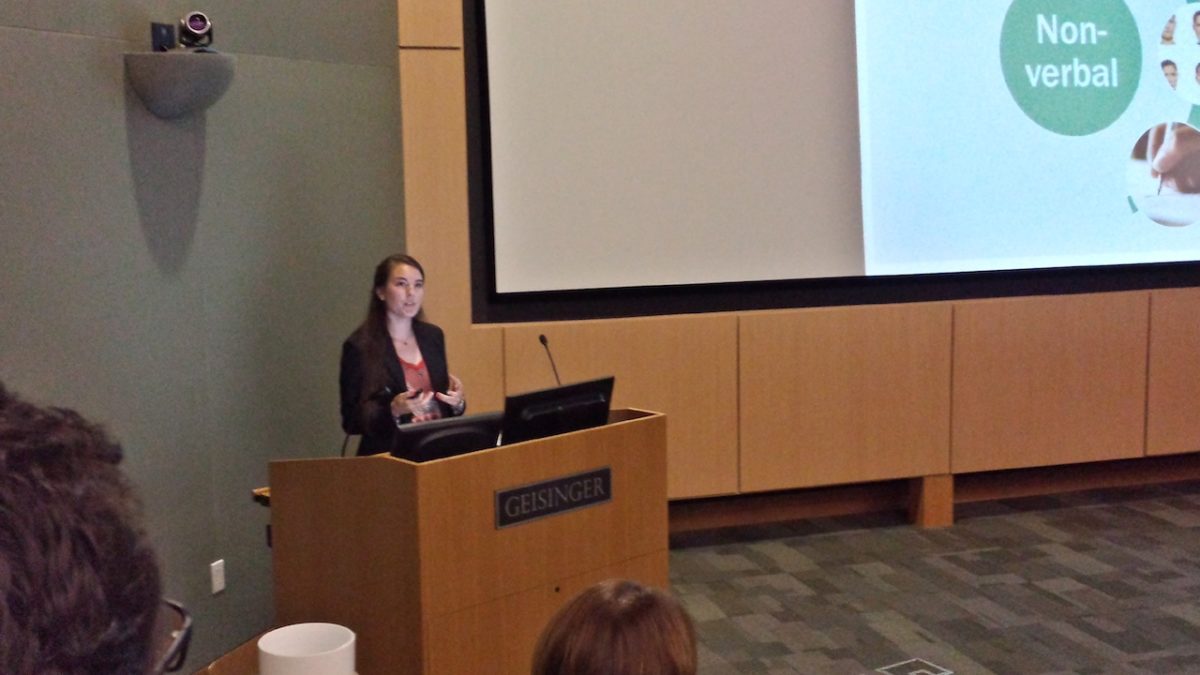Project: Using statistical learning to improve word prediction for augmentative and alternative communication
Duration: Summer 2014
Funding: Bucknell University Program for Undergraduate Research, Geisinger BGRI Grant
ABSTRACT
There are a multitude of reasons why people may be unable to communicate effectively through verbal speech, including disorders like ALS, MS, Cerebral Palsy and Autism. Some people use augmentative and alternative communication (AAC), which is simply any mode of communication besides verbal speech, including gestures, writing, facial expressions, pointing to pictures and so on. In recent decades, the field of AAC has been flooded by electronic devices which generate speech for these people based on combinations of pictures, symbols and/or words that are stored on the device. Unfortunately, these devices do present problems; notably, the communication rate with a device is reduced to a fraction of the communication rate of normal speakers. The average user of a device is only able to communicate 10 words per minute, compared to the 130-200 words per minute of an average speaker [ref]. This stark contrast can leave users frustrated, reducing the utility of such devices. The aim of this research is to develop a novel algorithm that would increase the communication rate for users of AAC devices.
ACHIEVEMENTS
- Oral Presentation – Fourth Annual Susquehanna Valley Undergraduate Research Symposium, SVURS 2014, August 5, Geisinger Research, Danville, PA
Winner for oral presentation – One of three chosen out of 86 submissions! - Poster Presentation – 2014 Sigma Xi Summer Student Research Symposium, July 24, Bucknell University, Lewisburg, PA
POST GRADUATION UPDATES

